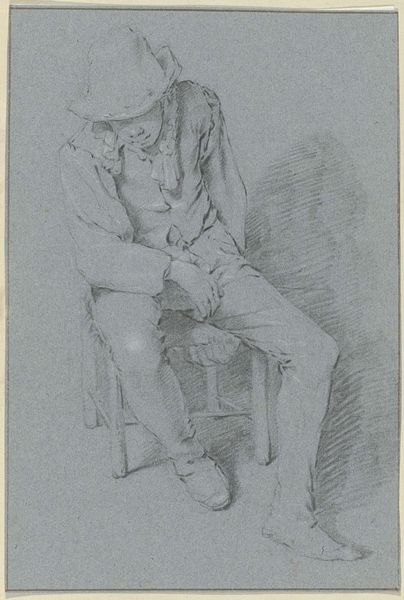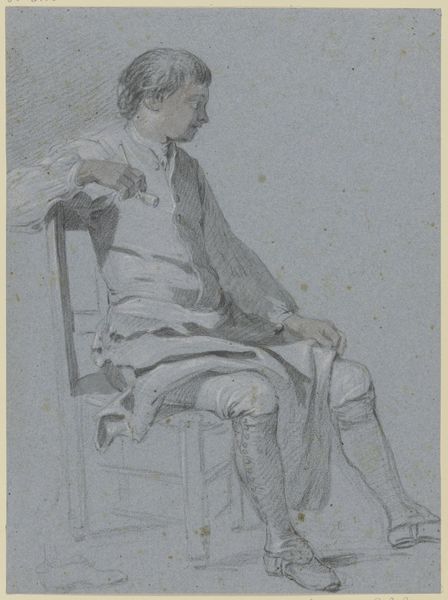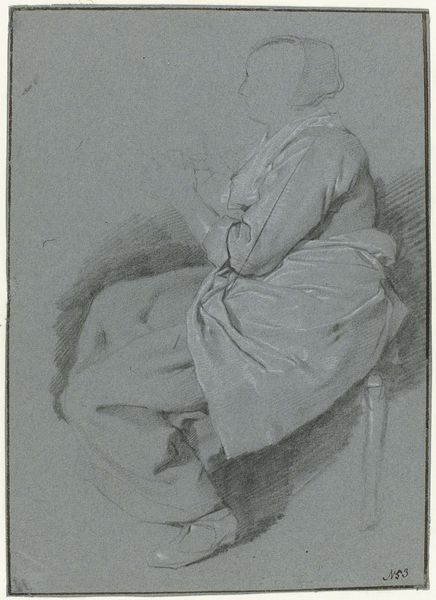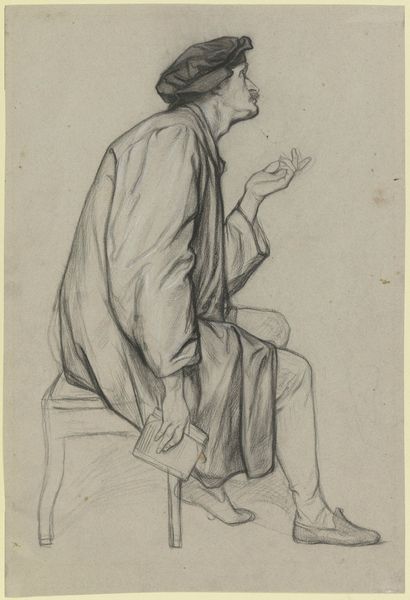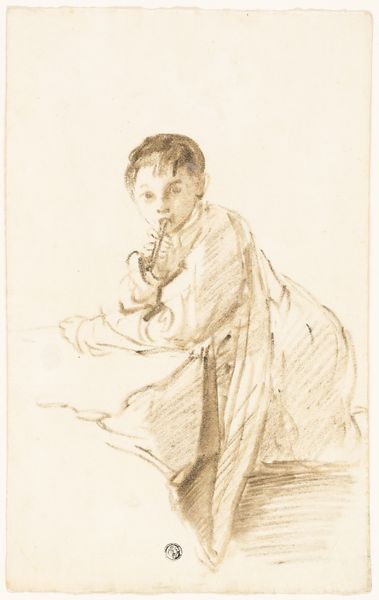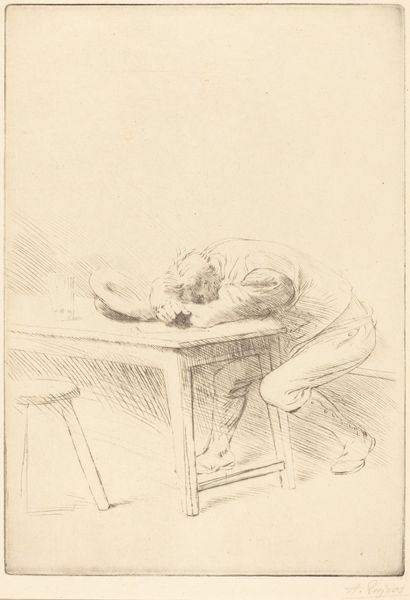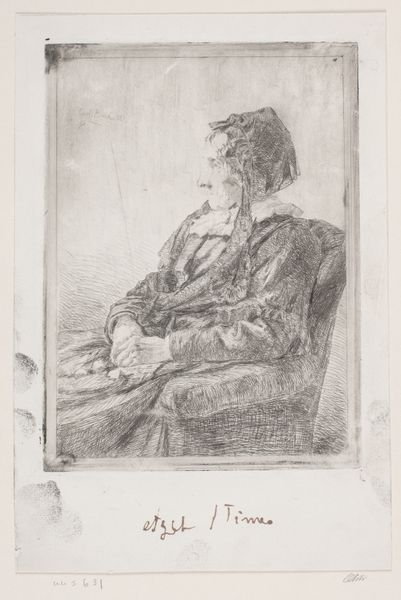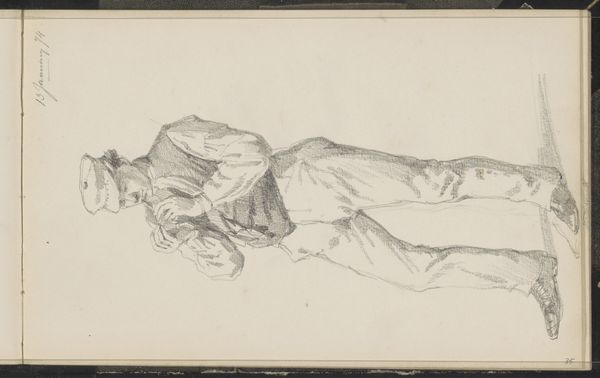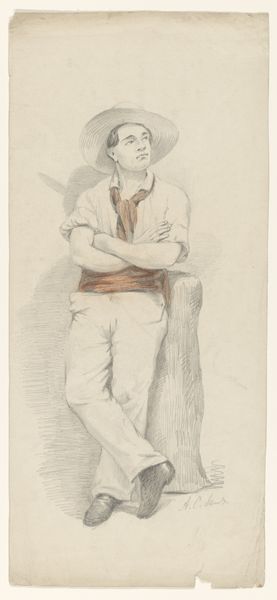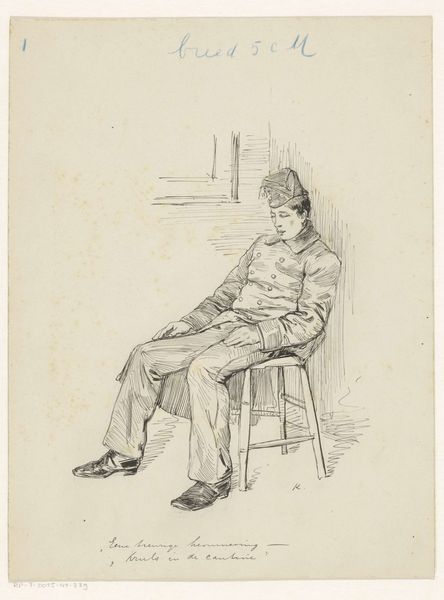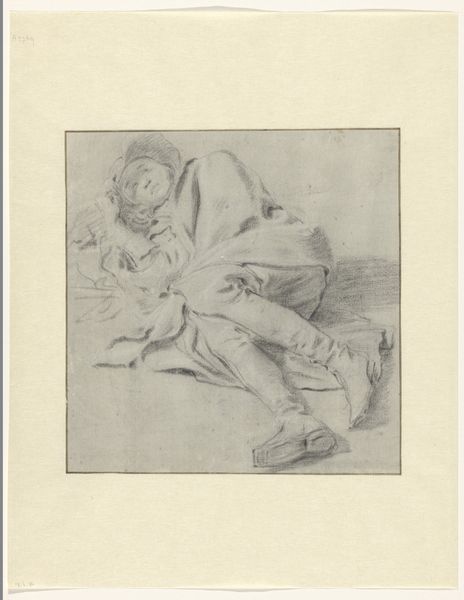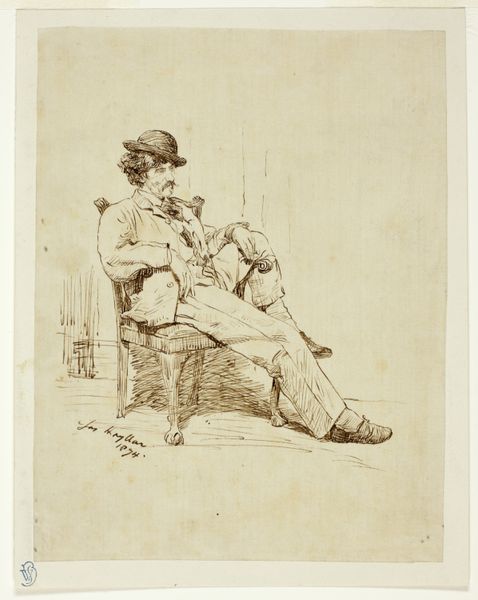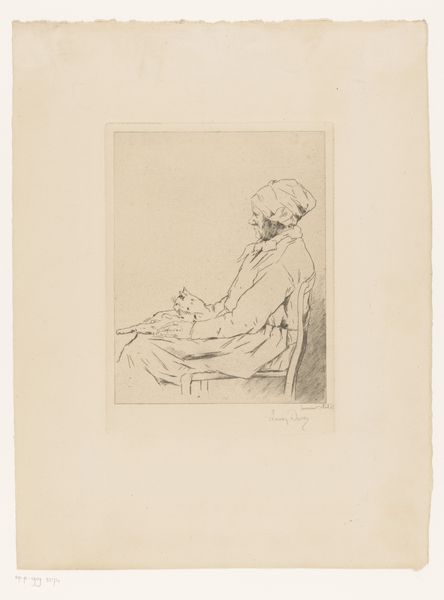
drawing, chalk
#
portrait
#
pencil drawn
#
drawing
#
baroque
#
chalk
Copyright: Public Domain
Curator: This is Cornelis Dusart's 1687 chalk drawing, “Smoking Peasant Seated on a Chair, Facing Right,” now housed at the Städel Museum. Editor: It's a study, clearly. The light catches his smiling face, that simple chair, but a general gloom weighs him down. Curator: Note the detailed rendering achieved solely with chalk, reflecting the Baroque era’s interest in capturing realistic textures. Consider the labor of producing chalk itself—the extraction, processing. Editor: I see a portrait of someone existing within a highly stratified society. Tobacco production relied on exploited labor; is our peasant a consumer, complicit in this system? His apparent contentment… it’s unsettling. Curator: The hatching and cross-hatching techniques used to define form and shadow also highlight the physical act of drawing itself. Look at how the artist renders the play of light on the woven seat, that attention to the humble, functional objects of daily life. Editor: Exactly. Think of that chair – made by someone, for someone else to sit upon. The sitter has probably worked hard and his enjoyment becomes, politically speaking, a tiny act of revolt! The lines of the chalk become testament of the exploitation on which Dutch society depended. Dusart forces the viewer to confront this contradiction: bucolic idyll or enforced social order. Curator: True, that juxtaposition creates a visual tension that makes us think about labor and leisure. It is not as romantic as it appears! Editor: Exactly! Curator: I appreciate how your reading complicates Dusart’s piece by foregrounding historical and social dynamics that shaped not only its content but our understanding of it today. Editor: And you focus me on the physical creation of the artwork itself— the act of marking.
Comments
No comments
Be the first to comment and join the conversation on the ultimate creative platform.
